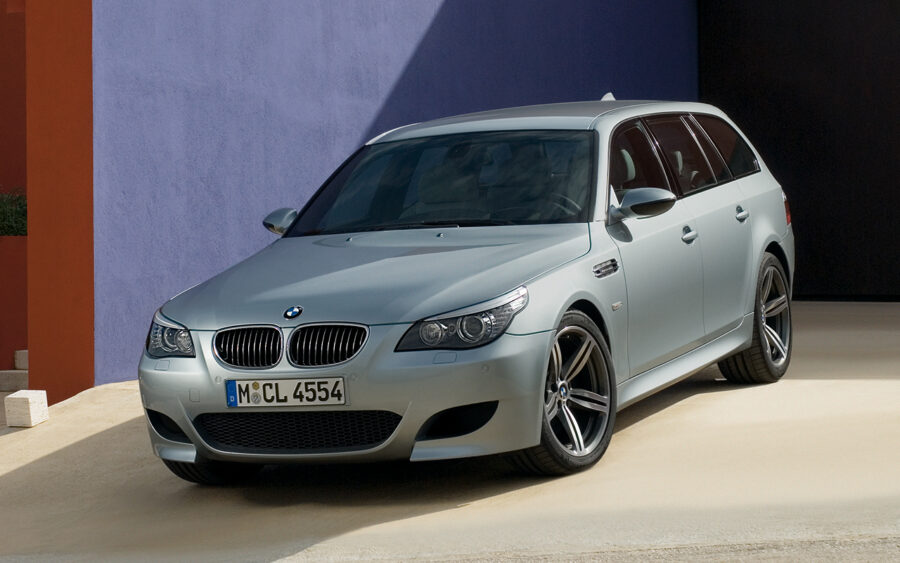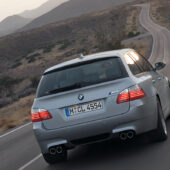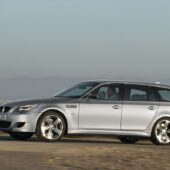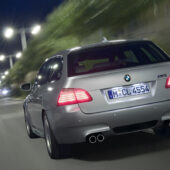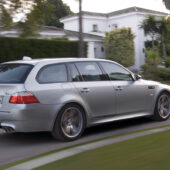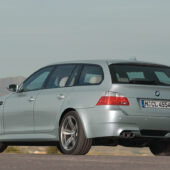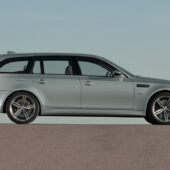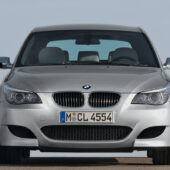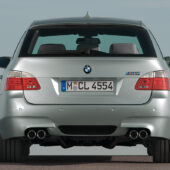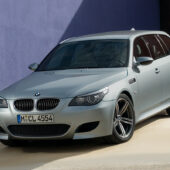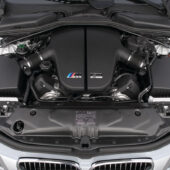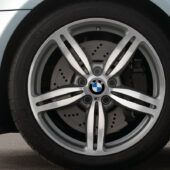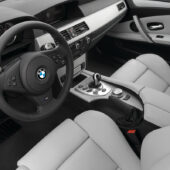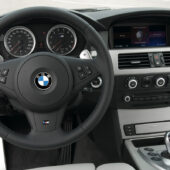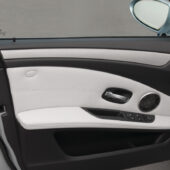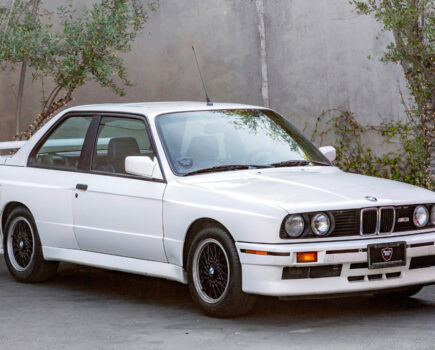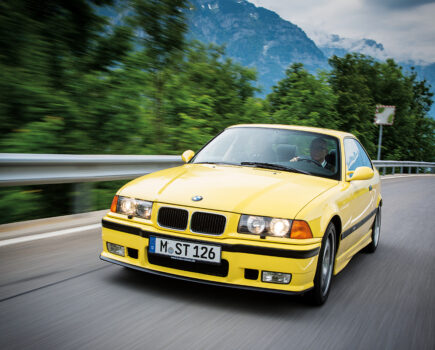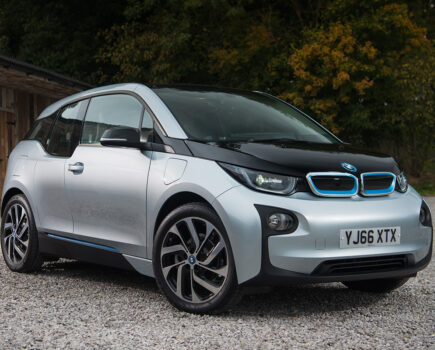BMW’s second attempt at an M-powered Touring was a spectacular V10-powered estate with supercar performance. Here’s the full story
Words: Bob Harper Images: BMW
It does seem faintly ridiculous that BMW has produced six generations of M3 and M5, yet over the best part of four decades, fewer than 2000 of those cars have been estates or Touring models. Yes, that was just 891 examples of the E34 M5 Touring and 1025 examples for the E61 M5 Touring – both manufactured in small production runs, leaving the door open for Audi and Mercedes-AMG to corner the market. Thankfully, the latest M3 Touring has put BMW at the top of the performance tree again – but it’s come along very late in the game.
Both the BMW M5 Touring models looked to be like a little bit of an afterthought, being introduced halfway through their respective saloon siblings’ production runs, but that shouldn’t take anything away from these iconic machines as they were both sublime cars, albeit with very different characters.
The four-door M5 E60 was launched late in 2004, and it really was a bonkers technological tour de force. Designed with a slightly tenuous link to BMW’s F1 campaign, the road car featured a five-litre V10 that revved to stratospheric levels, developing its maximum power of 507hp at 7750rpm and being red-lined at 8250rpm. Its torque output was reasonable at 383lb ft but was developed at a peaky sounding 6100rpm, even though BMW was keen to point out that the vast majority of that twist was available from low down in the rev range. It received rave reviews but not universal praise. Its seven-speed SMG III transmission coming in for particular criticism, thanks to a change quality that varied from slows and slurry in its meekest automatic mode to whiplash brutal in its fastest manual setting.
There was no getting away from its raw pace, though, with a 0-62mph time of just 4.7 seconds – hugely impressive for a four-door saloon that weighed 1.8 tonnes. It was complicated, though, with 11 gearbox modes, three power and three suspension settings, but it handled like a go-kart on steroids, and when at full chat, the V10 screamed like a wailing banshee. There were all the normal M styling cues – upgraded mirrors, side gills, quad exhausts and the like – and it rode on a set of 19” rims. It was, quite simply, the ultimate super saloon.
And what could make it even better? Five doors. The Touring version wasn’t introduced until the E60 generation of 5 Series received its mid-life nip and tuck, and along with revised cooking versions of the E60 and E61 was the arrival of the E61 M5 Touring. All the bonkers attitude of the saloon, but with the ability to transport wardrobes at warp factor eight.

The Touring, like the saloon, used the same basic E60 suspension architecture, but there was a myriad of changes to make sure it was capable of harnessing that 507hp. Both the front and rear subframes were modified, and bushes were upgraded all-round, too. There were model-specific spring rates, and both the saloon and Touring featured Electronic Damper Control (EDC), providing constantly variable damper rates, as well as the ability to switch between Sport, Normal and Comfort settings.
Just about the only variation between the four- and five-door models was that the front and rear anti-roll bars were thicker on the Touring. The E61 M5 Touring went on sale in the UK in June 2007 and carried a price tag of £67,075 – a £2580 premium over the saloon. Initially, BMW UK was talking about sales in the region of around 300 per year, but that proved to be way optimistic and in the end, just 222 right-hand drive M5 Tourings were manufactured.
While the sales figures might have been disappointing, there was very little wrong with the way the M5 Touring drove. Yes, the engine was a little peaky, and the gearbox was overly complicated, but these foibles could be driven around most of the time, and once you were on the right road in the right set of modes, it was a devastatingly rapid way to travel. On the motorway, it was very effective, but its ability as a continent crusher was somewhat dented by the S85 V10’s thirst for super unleaded. Even cruising at a steady 80-90mph on derestricted autobahns, you were only likely to see high teens on the OBC readout, and even if you tickled it along in 400hp mode, you were unlikely to see much more than 20mpg. It did ride well, though, and in its softest suspension setting, it seemed a little bit more composed and compliant than the saloon.
While the Touring was good on the motorway, it’s often more interesting to head cross country and search out some lightly trafficked roads. Find some smooth and dry tarmac, and the M5 Touring would make short work of other cars, dispatching dawdlers with disdain. With less than 400lb ft of torque, the M5 wasn’t hugely grunty, and that twist was delivered fairly high up in the rev range. That meant you couldn’t just laze along if you wanted to make progress: you needed to concentrate on what you are doing.
That meant making sure you were in P500 mode and that you dropped down a couple of cogs for overtakes. Then the M5 erupted into the supercar we knew it was. Commit to it, and it was sensational, invigorating, carrying huge corner speeds with contemptuous ease and shrinking around you. With the engine in the sweet spot, it’s hard to imagine any road car would have the legs of it.
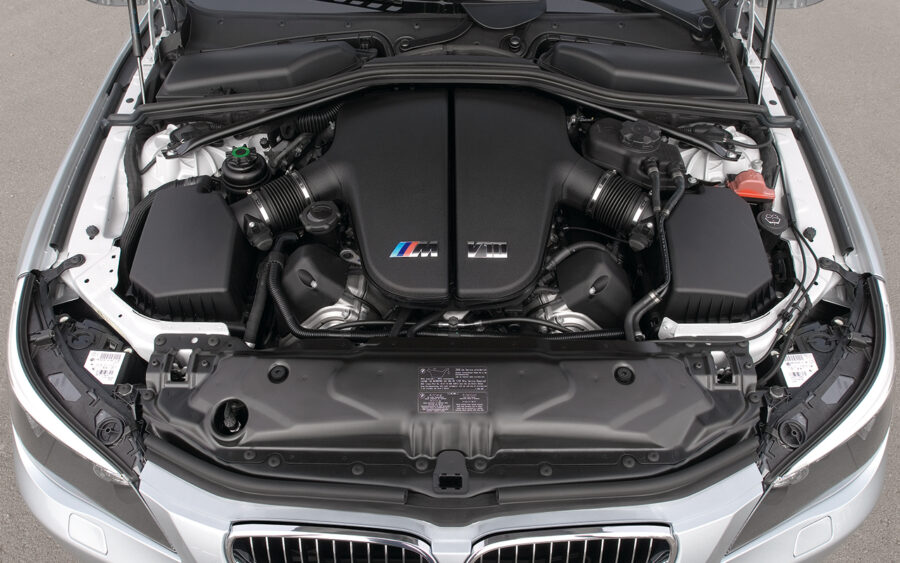
The M5 Touring was some 125kg heavier than the saloon (1955kg plays 1830kg), and BMW did a good job of recalibrating the suspension settings to cope with the extra load-carrying potential of the estate layout. In truth, there was very little difference in feel. You barely noticed the suspension differences between the four- and five-door, and the extra weight was fairly inconsequential in a car weighing almost two tonnes. Dynamically, the Touring felt uncompromised.
Find a nice set of switchbacks and you could play with the various DSC settings. Leave it on, and the M5 would keep everything neat and tidy no matter how ham-fisted you were with your inputs, but explore the M Dynamic Mode, and the chassis would allow a certain amount of slip before reining it in. Switch the DSC off, and it confirmed the Touring is every bit as happy to drift as the saloon was. Faster, bumpier corners revealed reserves of talent, but you needed the softer of the suspension settings to make the best fist of things as selecting the firm setting could unsettle the M5.
There was so much to like about the M5 Touring that you could forgive its foibles. The bad was mostly the fuel consumption – it refused to top 20mpg, and that was taking it quite easy on a long run. In town, you could expect low teens at best. The good was the combination of practicality, stealth and unbelievable pace. That massive open rear area made lugging even the most awkward of loads a doddle, too. The engine was a masterpiece, proving more flexible than the figures might suggest, but to get the most out of it, the S85 really needed to be revved and revved hard. To experience an S85 at full chat really is to experience greatness. It delivered a knockout punch that few cars can live with, and it sounded absolutely delightful while doing so.
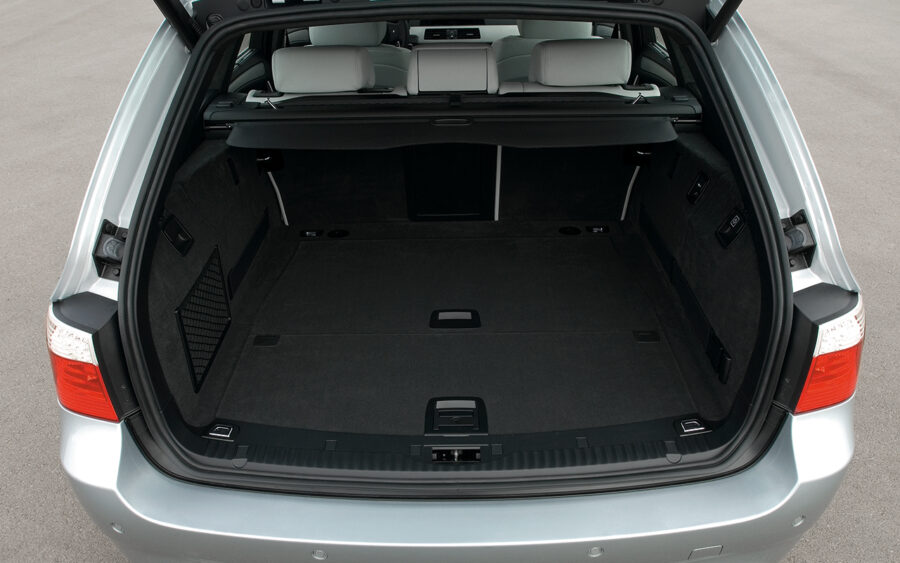
Despite the muscles, most road users don’t give the car a second glance, which can be a real bonus when you want to pass under the radar, but those in the know love the car. The M5 Touring was comfortable and refined, as well as stonkingly fast. But the best thing about the car was its playfulness. How those M boffins managed to make a large V10-powered estate into such a go-kart is something else.
It wasn’t perfect, though. The intervening years haven’t been hugely kind to the M5’s reliability reputation, and you’d need to be brave to take one on. The oldest examples are 16 years old, though, so you could probably expect some gremlins to crop up, but the main issue is that when an M5 does go wrong, it never seems to involve a cheap fix.
It might be a trifle fragile, but if you’re feeling brave the E61 M5 is still an absorbing machine.
Even today, it’s still ballistically quick and a joy to drive, handling like a real thoroughbred but with the sort of practicality that sports cars can only dream of. Quite why it didn’t sell better is a bit of a mystery… let’s hope that the new M3 Touring does better on the showroom floor. We’re moving into the last generation of M cars powered by conventional drivetrains, and it would be a pity if the last of their kind weren’t available in BMW’s best body style.

